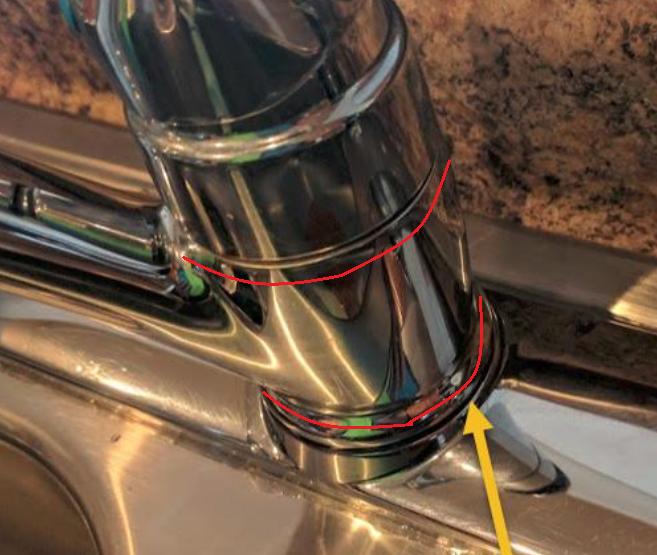The part of these faucets that the output spout connects to have O-rings inside at the approximate locations shown by the red lines below.
These O-rings seal the gap to the central post of the faucet around which the spout assembly rotates. Leaks can develop when:
- An O-ring is torn for some reason.
- Hard water deposits such as a calcium or lime deposit from evaporated hard water gets into the O-ring and breaks the seal.
- The O-rings can get old and dry out so they become hard. Thus losing the rubbery compliance that is needed to create a seal.
- Sometimes there is lubrication added to the zone where the O-rings reside making the rotating part move smoothly. If the lubrication loses its effectiveness it can cause the O-rings to wear and thus allow for a leak.
You can check these O-rings by removing first the faucet handle and then the upper part of the center post assembly (after first shutting off the supply valve at the wall under the sink). This should allow the spout assembly to be removed by pulling it up while at the same time rotating it back and forth some. Once removed the O-rings can be inspected. If they are hard, dry, torn or worn they will most likely need replacement. If it appears to be a loss of lubrication that can be restored by using a small amount of food grade petroleum jelly.
Note you may find the O-rings reside within a slot inside the spout assembly or they may be in a groove that surrounds the upper and lower area of the center post portion of the faucet.
Typical Moen Kitchen Faucet exploded parts assembly:


